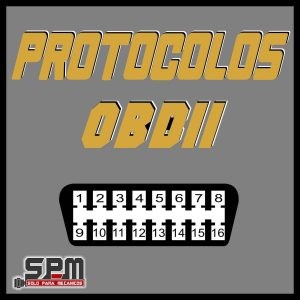OBD2 (On-Board Diagnostics II) is a standardized system that allows external devices to access a vehicle’s diagnostic information. A key component of this system lies in the OBD2 communication protocols, which dictate how the scan tool communicates with the vehicle’s computer. Understanding these protocols is crucial for effective vehicle diagnostics and troubleshooting. This article will delve into the different types of OBD2 communication protocols.
Why Knowing OBD2 Protocols Matters
Knowing the different Protocolos De Comunicación Obd2 is essential for several reasons. It helps determine compatibility between a scan tool and a vehicle. Not all vehicles use the same protocol, and using the wrong tool can lead to connection failures. While many vehicles have a standard OBD2 connector (DLC), the underlying communication protocol might differ. Understanding these protocols can also assist in troubleshooting connection issues. By checking the specific pins associated with each protocol for data, voltage, and ground signals, technicians can pinpoint the source of the problem. This knowledge differentiates between OBD1 and OBD2 systems, as they utilize distinct communication methods.
Types of OBD2 Communication Protocols
There are five main OBD2 communication protocols:
1. ISO 9141-2
This protocol utilizes a single K-line for bidirectional communication.
- Pin 5: Ground
- Pin 7: K-Line (Data)
- Pin 16: Battery Power (V BAT +)
2. ISO 14230-4 (KWP2000)
This protocol uses a K-line for communication, similar to ISO 9141-2, but with a different communication speed and initialization process.
- Pin 5: Ground
- Pin 7: K-Line (Data)
- Pin 15: L-Line (Data) – May be used for specific functions
- Pin 16: Battery Power (V BAT +)
3. SAE J1850 VPW
This protocol employs a single wire for variable pulse width communication.
- Pin 2: Data Line
- Pin 5: Ground
- Pin 16: Battery Power (V BAT +)
4. SAE J1850 PWM
This protocol utilizes a single wire for pulse width modulation communication.
- Pin 2: Data Line
- Pin 10: Data Line
- Pin 5: Ground
- Pin 16: Battery Power (V BAT +)
5. ISO 15765-4 (CAN)
This protocol utilizes two wires for high-speed communication using a Controller Area Network (CAN).
- Pin 5: Ground
- Pin 6: CAN High (CAN-H)
- Pin 14: CAN Low (CAN-L)
- Pin 16: Battery Power (V BAT +)
Conclusion
Understanding the various protocolos de comunicación obd2 is fundamental for anyone working with vehicle diagnostics. By knowing how these protocols function and which pins they utilize, technicians can ensure proper connection with the vehicle’s onboard computer, enabling accurate retrieval of diagnostic trouble codes (DTCs) and other vital data for effective troubleshooting and repair. This knowledge ultimately contributes to a more efficient and accurate vehicle diagnostic process.

